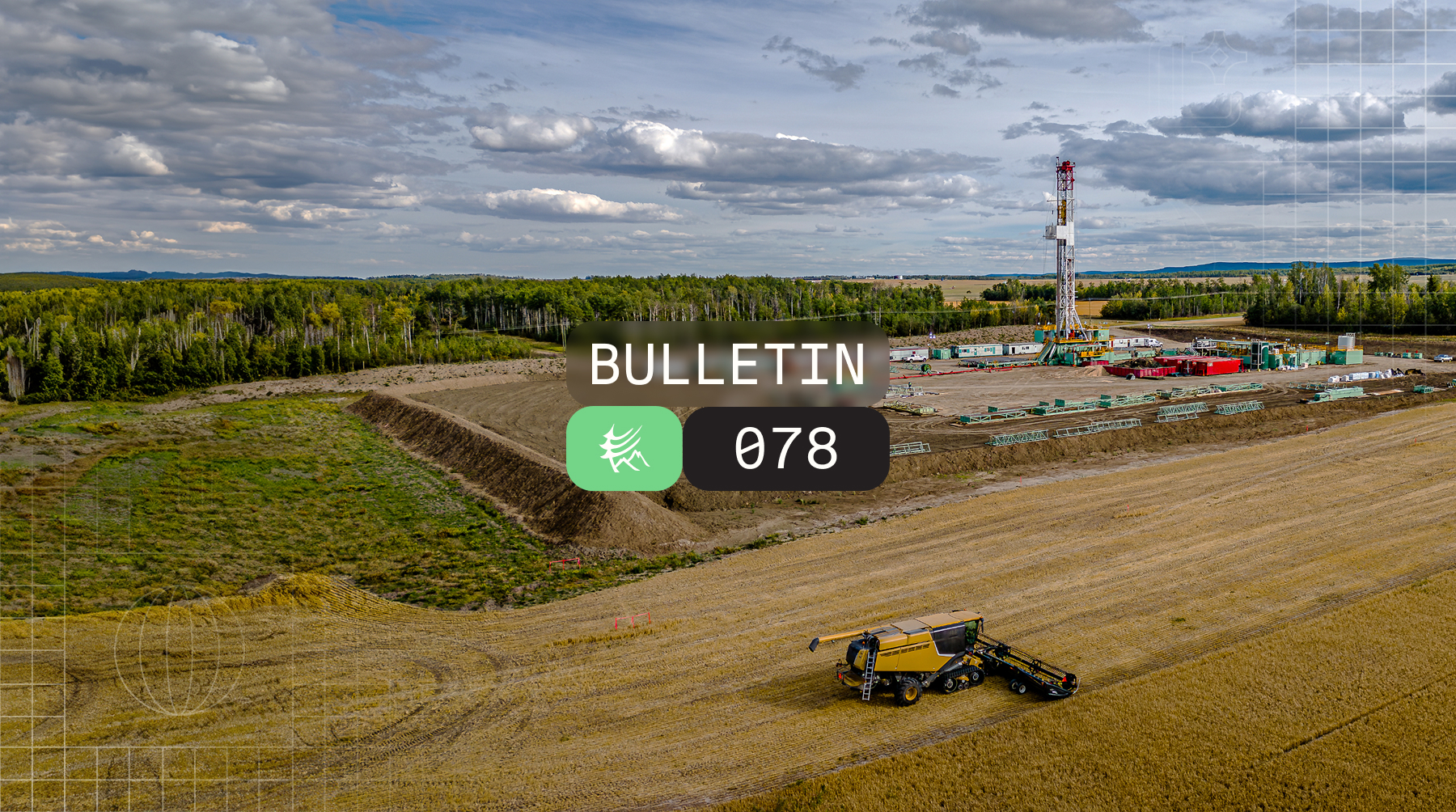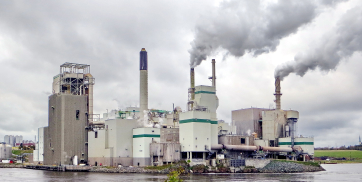The Canadian Federal Government has pledged to reach net-zero greenhouse gas emissions (primarily methane and carbon dioxide) across the country by 2050, with a shorter-term goal of 40-45% emission reductions below 2005 levels by 2030. Currently, the oil and gas industry in Canada accounts for roughly a quarter of all national greenhouse gas emissions.1 In July of 2022, the Minister of Environment and Climate Change, Steven Guilbeault, announced the implementation of “flexibility mechanisms”, granted to the oil and gas industry, to allow for more time to meet these goals. These “flexibility mechanisms”, in line with the Paris accord on climate change, allow for companies to use carbon credits to meet reduction targets, and provide more time for long-term emissions reduction infrastructure to be built. When implemented, these mechanisms could result in new business avenues for Canadian oil and gas producers.
Why the extension for oil and gas?
Many of the “low-hanging fruit” emission reduction strategies are already well underway and have been adopted by the Canadian oil and gas industry. However, to achieve further emission reductions, new infrastructure will need to be built. Specifically, carbon capture, utilization, and storage (CCUS) facilities, which capture and sequester carbon dioxide emissions from petroleum facilities, or even directly from the atmosphere. These facilities are specialized and require longer timelines and large budgets to construct.
Because of these constraints, a group of oil and gas companies requested an extension to the 2030 timeline. On September 23, 2022, the Federal Government released Faster and Further: Canada’s Methane Strategy, outlining methane reduction plans and measures for the oil and gas and other industries. The rollout of this strategy demonstrates the government’s intention to reduce oil and gas methane emissions. The new Methane Strategy did not address the extension request, rather it outlines measures which are underway or planned for methane emissions reductions.
Alberta’s oilsands will be impacted
Most emissions reduction strategies are targeted at well-based oil and gas extraction and primarily focus on reducing methane emissions. However, oilsands make up a significant portion of the oil produced in Canada, and their emissions occur in markedly different ways than from conventional extraction.
While oil and gas wells are typically under scrutiny because of their methane emissions, due to the high methane content in natural gas and the greenhouse potential of methane, oilsands emissions are primarily carbon dioxide.
Oilsands groups (such as the newly formed Pathways Alliance) are claiming that hitting emissions reductions goals by 2030 are not feasible under current circumstances.1,2 More time and higher investment in CCUS infrastructure is needed, and even then, may still fall short of the government’s commitments.1
Where does all this CO2 come from?Oilsands operations traditionally require steam injection to recover oil from the reservoir. Producing this steam is costly – current estimates suggest that between 2-3 BCF/day is combusted to generate steam for injection.3 For context, in 2021, the average daily production of natural gas for all of Alberta was 9.8 BCF/day.4 How much CO2 is released from this much natural gas every day in the oilsandsAssume 2.5 BCF/day are combusted. 2.5e9 ft3/day * 0.0551 kg CO2 / ft3= 137 750 tonnes CO2/day |
How will flexibility mechanisms impact industry?
The Government of Canada has proposed a new cap-and-trade system that operates only within the oil and gas sector.2 Under this new framework, companies that fail to meet their emission reduction targets would have to purchase offset credits from companies that have exceeded their targets and have credits to spare. A similar system currently exists, but trading can occur between any sector.
The main function of this proposed intra-industry cap-and-trade system would be to hit the 2030 reduction targets on paper, but not in reality. Companies can “borrow” offsets in advance, like taking out a loan, and then repay the emissions after 2030, thus, buying more time to develop sustainable long-term strategies and infrastructure.
Where does this leave producers?
The new proposed rules present an opportunity for producing companies. Oil and gas producers across Canada have already taken action to reduce emissions. A variety of reasons exist for these proactive measures, including access to capital, engagement from buyers, regulations, loss of valuable product, and ESG (environmental, social, governance) benefits.
Currently, carbon offset credits for the oil and gas industry in Alberta can be generated via projects which reduce vent gas. Projects which reduce vented emissions below the Overall Vent Gas Limit for a given site are eligible to generate credits.6 Eligible project categories include:
- Conservation of gas (tying into an existing sales gas pipeline, onsite use as fuel gas or for onsite power generation)
- vent gas destruction (incineration or tying into an existing flare), and
- emission reduction from pneumatic devices projects (substitution with inert gas, instrument gas to instrument air conversion, pneumatic device electrification, and pneumatic vent gas capture).7
Given that such a wide range of emissions reductions projects exist for conventional production (have you read our article about Marginal Abatement Cost Curves?), and the currently high oil and gas prices, now is the optimal time for producers to undergo projects with big impacts. Implementing such projects can lead to long term gains, especially with the federal carbon tax set to increase up to CA $170/tCO2e by 2030.8
With the potential rollout of a sector-specific cap and trade system, oilsands producers (or any producers) that are not able to meet reductions targets will be obligated to purchase carbon credits from within the sector to offset their emissions, or pay the carbon tax. For non-oilsands producers who exceed their emissions reduction requirements, the opportunity to sell offset credits to oilsands producers may become another driver for conducting emissions-reducing projects.
The implementation of “flexibility mechanisms” for the oil and gas sector by the Government of Canada may allow for industry to meet emissions reductions objectives, while incentivizing both shorter- and longer-term emissions reduction action. The timing has never been better to kick-start or double down on your emissions management journey.
- News ·, E. von S. · C. Oil and gas industry could get more time to meet 2030 emissions targets, minister says | CBC News. CBC https://www.cbc.ca/news/canada/calgary/oil-gas-emissions-reduction-guilbeault-climate-vonscheel-1.6528307 (2022).
- Press ·, M. R. · T. C. Ottawa proposes to cap oil, gas emissions using industry-specific carbon pricing system | CBC News. CBC https://www.cbc.ca/news/canada/calgary/cap-oil-gas-trade-system-ottawa-guilbeault-carbon-price-1.6523791 (2022).
- Government of Canada, C. E. R. NEB – Market Snapshot: Oil sands use of natural gas for production decreases considerably in early 2020. https://www.cer-rec.gc.ca/en/data-analysis/energy-markets/market-snapshots/2020/market-snapshot-oil-sands-use-of-natural-gas.html (2021).
- Alberta Energy Regulator. Natural Gas Production. Alberta Energy Regulator https://www.aer.ca/providing-information/data-and-reports/statistical-reports/st98/natural-gas/production (2022).
- US EPA, O. Greenhouse Gases Equivalencies Calculator – Calculations and References. https://www.epa.gov/energy/greenhouse-gases-equivalencies-calculator-calculations-and-references (2015).
- aep-quantification-protocol-for-vent-gas-reduction-version-1.0.pdf.
- Alberta Environment and Parks. Quantification Protocol for Greenhouse Gas Emission Reductions from Pneumatic Devices. (2020).
- Canada, E. and C. C. Update to the Pan-Canadian Approach to Carbon Pollution Pricing 2023-2030. https://www.canada.ca/en/environment-climate-change/services/climate-change/pricing-pollution-how-it-will-work/carbon-pollution-pricing-federal-benchmark-information/federal-benchmark-2023-2030.html (2021).





